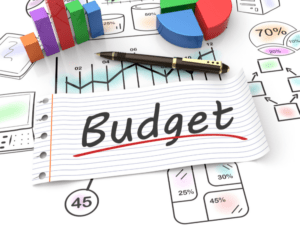Understanding the requirements of VAT returns
Navigating VAT returns can be a complex and challenging aspect of financial management for businesses. Understanding VAT regulations, keeping accurate records, and filing VAT returns correctly is essential for compliance and avoiding penalties. In this blog, we will navigate through the intricacies of VAT returns for businesses in the UK, providing valuable insights and guidance.
VAT Registration
Determining whether your business needs to register for VAT is the first step. Consider the following:
- VAT Threshold: If your taxable turnover exceeds the current VAT registration threshold (£85,000 as of 2023/2024), you must register for VAT.
- Voluntary Registration: Even if your turnover is below the threshold, voluntary registration may be beneficial for your business to claim input VAT on purchases.
Understanding VAT Rates and Schemes
Familiarise yourself with the different VAT rates and schemes applicable to your business:
- Standard Rate: Most goods and services are subject to the standard rate of VAT, currently set at 20%.
- Reduced Rate: Certain supplies, such as domestic fuel or energy-saving materials, qualify for a reduced VAT rate of 5%.
- Zero Rate: Zero-rated supplies, including some food items, children’s clothing, and exported goods, are VAT-exempt but still need to be reported in VAT returns.
- VAT Schemes: Explore different VAT schemes, such as the Flat Rate Scheme or Annual Accounting Scheme, to simplify VAT calculations and reporting.
Maintaining Accurate VAT Records
Accurate record-keeping is crucial for VAT compliance and completing VAT returns. Here’s what you should do:
- Sales and Purchases: Keep detailed records of all sales and purchases, including invoices, receipts, and credit notes.
- VAT Invoices: Ensure VAT invoices include the required information, such as your business’s VAT registration number, customer details, VAT rate, and amount.
- Reverse Charge Transactions: If you deal with reverse charge transactions, where the customer is responsible for paying the VAT, ensure appropriate records are maintained.
Completing VAT Returns
VAT returns must be submitted to HM Revenue & Customs (HMRC) on time, usually on a quarterly basis. Follow these steps when completing your VAT return:
- Calculate Output VAT: Determine the VAT you charged on your sales during the reporting period.
- Calculate Input VAT: Calculate the VAT you paid on your purchases and expenses, ensuring it is properly recorded and claimed.
- Determine the VAT Liability: Deduct the input VAT from the output VAT to determine your VAT liability or refund.
- Submitting VAT Returns: Submit your VAT return online to HMRC using the Government Gateway or Making Tax Digital (MTD)-compatible software.
VAT Payment and Deadlines
VAT payments must be made to HMRC by specific deadlines. Consider the following:
- Payment Methods: Ensure you choose the appropriate payment method, such as Direct Debit, online banking, or BACS.
- VAT Deadlines: Stay updated with VAT return deadlines, as late submissions or payments may result in penalties or interest charges.
Seeking Professional Advice
Navigating VAT returns can be complex, and it’s essential to seek professional advice when needed. An experienced accountant can provide guidance tailored to your specific business needs, ensuring compliance and maximising VAT savings.
Navigating VAT returns is a crucial aspect of financial management for businesses. By understanding VAT registration, familiarising yourself with VAT rates and schemes, maintaining accurate records, completing VAT returns correctly, and adhering to payment deadlines, you can ensure compliance and avoid costly penalties. Remember, seeking professional advice from a trusted accounting firm experienced in VAT matters can provide invaluable support in navigating the complexities of VAT regulations. Stay informed, keep accurate records, and confidently manage your VAT obligations for the success of your business.












